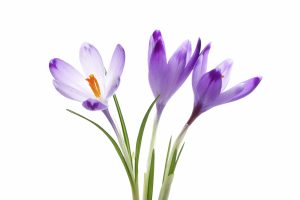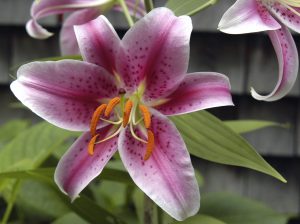It's that time of year again where we are all eager to get our yards back into shape. However, there are many landscaping products on the market that could pose a threat to your pets. Below is a list, courtesy of the Pet Poison Helpline, of the more common dangers that we need to keep an eye out for.
Mulch Products
Cocoa
bean mulch is made of discarded hulls or shells of the cocoa bean,
which are by-products of chocolate production. The tempting
“chocolate-like” smell often attracts dogs and may encourage them to eat
the mulch. Processed cocoa bean hulls can contain theobromine and
caffeine, the two toxins of concern in chocolate. Unfortunately,
determining the amount of toxins in mulch can be difficult as it varies
greatly from product to product. Many varieties contain very low amounts
of the toxins and are not as dangerous as dog owners are often led to
believe; however, varieties with higher toxin concentrations can cause
vomiting, diarrhea, hyperactivity, an abnormal heart rhythm, seizures
and in extreme cases, death. Since it is not usually apparent how much
of the toxin some mulch contains, it’s best to keep dogs a safe distance
away, to always supervise your pet while outside, or to not use the
mulch at all.
Fertilizers, Soil Additives and Pesticides
While fertilizers are typically fairly safe for pets, those that contain blood meal, bone meal,
feather meal and iron may be especially tasty – and dangerous to dogs.
Large ingestions of the meal-containing products can form a concretion
in the stomach, potentially obstructing the gastrointestinal tract and/or
cause severe pancreatitis. Those that contain iron may result in
iron poisoning. Also, ingestion of pesticides and insecticides,
especially if they contain organophosphates (often found in systemic
rose care products), can be life-threatening, even when ingested in
small amounts.
Slug and Snail Baits
Available in a variety of forms (pellets, granular, powder and liquid), slug and snail baits contain the active ingredient metaldehyde,
which is highly poisonous to dogs and cats. When ingested, metaldehyde
produces clinical signs of distress within one to two hours, including
salivation, restlessness, vomiting, tremors, seizures, and
life-threateningly high body temperature. These baits are highly toxic
and without immediate veterinary attention, symptoms can last for
several days and can be fatal.
Compost
Gardeners love their compost; however, it can
be toxic to pets and wildlife so please keep it fenced off. As the
organic matter decomposes, it is common for molds to grow, some of which
produce hazardous tremorgenic mycotoxins.
When consumed by an animal, moldy food or compost ingestion can result
in sickness and physical distress in as little as 30 minutes. Symptoms
include agitation, panting, drooling, vomiting, tremors and seizures.
Prompt veterinary treatment with appropriate supportive care usually
results in a good prognosis.
Flowers and Plants
 Lily of the Valley: An early springtime favorite, the Lily of the Valley (Convallaria majalis)
contains cardiac glycosides, which are also used in many human heart
medications. When eaten by dogs or cats, this common perennial can cause
vomiting, diarrhea, a drop in heart rate, severe cardiac arrhythmias,
and possibly seizures. Any pet with a known exposure should be examined
and evaluated by a veterinarian and treated symptomatically.
Lily of the Valley: An early springtime favorite, the Lily of the Valley (Convallaria majalis)
contains cardiac glycosides, which are also used in many human heart
medications. When eaten by dogs or cats, this common perennial can cause
vomiting, diarrhea, a drop in heart rate, severe cardiac arrhythmias,
and possibly seizures. Any pet with a known exposure should be examined
and evaluated by a veterinarian and treated symptomatically. Crocuses: There are two types of crocus plants: one blooms in the spring and the other in the fall. The spring plants (Crocus spp.)
are more common and cause only gastrointestinal upset accompanied by
vomiting and diarrhea in dogs and cats. However, the fall crocus (Meadow
Saffron or Colchicum autumnale) is highly toxic and can cause
severe vomiting, gastrointestinal bleeding, and multisystem organ
failure with bone marrow suppression. Symptoms may be seen immediately
but can be delayed for days. If you witness your pet eating a crocus and
you are not sure what variety it is, seek veterinary care immediately.
Crocuses: There are two types of crocus plants: one blooms in the spring and the other in the fall. The spring plants (Crocus spp.)
are more common and cause only gastrointestinal upset accompanied by
vomiting and diarrhea in dogs and cats. However, the fall crocus (Meadow
Saffron or Colchicum autumnale) is highly toxic and can cause
severe vomiting, gastrointestinal bleeding, and multisystem organ
failure with bone marrow suppression. Symptoms may be seen immediately
but can be delayed for days. If you witness your pet eating a crocus and
you are not sure what variety it is, seek veterinary care immediately. Lilies: Cat owners beware of lilies! While some types, such as the Peace (Spathiphyllum spp.), Peruvian (Alstroemeria spp.) and Calla (Zantedeschia spp.), cause only minor symptoms when eaten, other varieties of the true lily family (Lilium and Hemerocallis
species) are deadly and highly toxic to cats, including Tiger, Asiatic,
Easter, Japanese Show and Day lilies. Ingesting very small amounts –
eating as little as two petals or leaves, or exposure to the pollen
– can result in severe kidney failure. Even the water in a vase
containing true lilies is considered highly poisonous, as the toxin in
the plant is water-soluble. If a cat consumes any part of these lilies,
he or she needs immediate veterinary care to prevent kidney failure.
Lilies: Cat owners beware of lilies! While some types, such as the Peace (Spathiphyllum spp.), Peruvian (Alstroemeria spp.) and Calla (Zantedeschia spp.), cause only minor symptoms when eaten, other varieties of the true lily family (Lilium and Hemerocallis
species) are deadly and highly toxic to cats, including Tiger, Asiatic,
Easter, Japanese Show and Day lilies. Ingesting very small amounts –
eating as little as two petals or leaves, or exposure to the pollen
– can result in severe kidney failure. Even the water in a vase
containing true lilies is considered highly poisonous, as the toxin in
the plant is water-soluble. If a cat consumes any part of these lilies,
he or she needs immediate veterinary care to prevent kidney failure.If you are planting this year, do some research prior to your decision. Employees at your local garden nursery may also be able to help answer pet safety questions. As far as fertilizers, baits, mulches, etc., read the packaging first. Most products make a point to say whether or not they are safe for your pet. When in doubt, don't use it. Being outside should be fun for everyone, but most importantly, it needs to be safe. Happy Spring!!